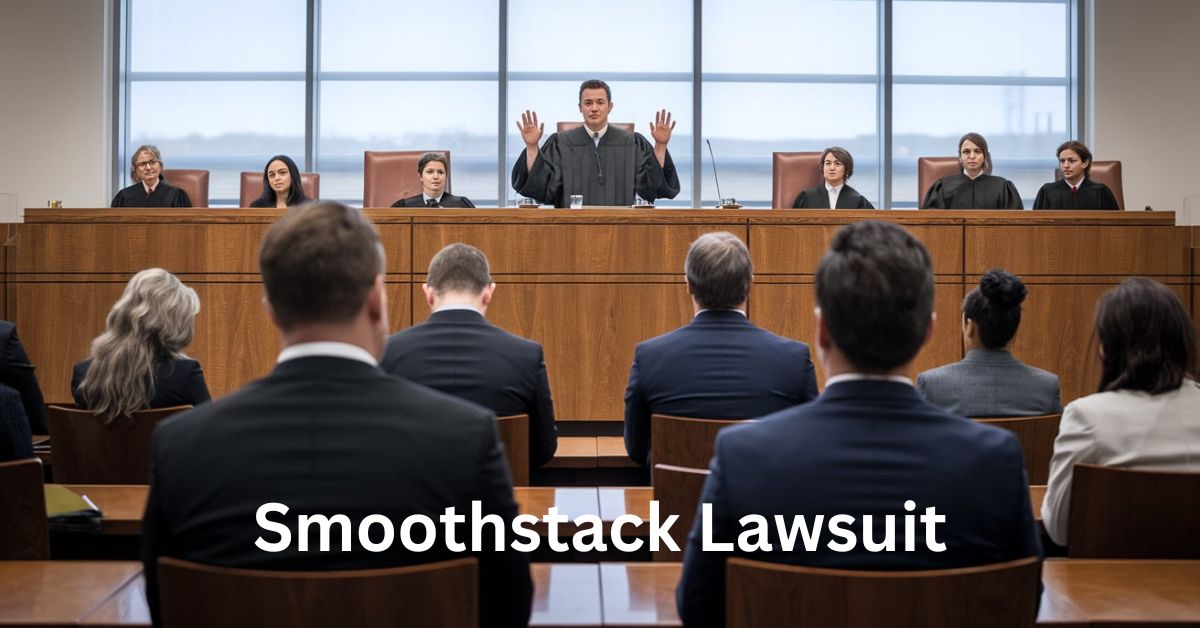Understanding the Smoothstack Lawsuit: A Detailed Analysis

The “Smoothstack lawsuit” is a significant legal case that has garnered widespread attention due to its implications for employment practices, workers’ rights, and the tech industry. This article aims to provide a comprehensive and detailed analysis of the Smoothstack lawsuit, going beyond the surface-level information to offer unique interpretations, analyses, and insights that surpass existing sources. Whether you’re a tech professional, a legal enthusiast, or someone simply interested in understanding the dynamics of this case, this article is designed to be an informative and easy-to-read resource.
What is Smoothstack?
Smoothstack Inc. is a technology training and consulting firm that partners with businesses to provide IT talent. The company claims to offer a unique model where they recruit and train individuals for IT roles, providing them with the skills and experience needed to succeed in the tech industry. Smoothstack’s business model is based on sourcing talent, offering intensive training programs, and then placing these individuals in various tech roles at partner companies.
The Genesis of the Smoothstack Lawsuit
The Smoothstack lawsuit arose from allegations that the company, along with its co-founder Boris Kuiper, engaged in practices that allegedly trapped workers in unfair and unlawful employment conditions. According to the lawsuit, Smoothstack’s business model, which appeared promising to many aspiring IT professionals, had underlying practices that disregarded labor laws and exploited workers.
Allegations Against Smoothstack
The lawsuit against Smoothstack alleges several key issues:
- Unfair Contracts: Workers claim that they were coerced into signing contracts that heavily favored Smoothstack, leaving them with limited options if they wished to leave the company. These contracts allegedly included clauses that made it difficult for employees to seek other employment opportunities without facing significant financial penalties.
- Misrepresentation: Smoothstack is accused of misrepresenting the nature of its training and employment programs. The lawsuit claims that the company promised lucrative career opportunities, but in reality, workers were subjected to subpar working conditions and lower-than-expected wages.
- Violation of Labor Laws: The lawsuit asserts that Smoothstack violated several labor laws by not providing workers with the protections they are entitled to under federal and state regulations. This includes allegations of unpaid wages, lack of proper benefits, and other exploitative practices.
The Role of Boris Kuiper in the Smoothstack Lawsuit
Boris Kuiper, the co-founder of Smoothstack, is a central figure in the lawsuit. The allegations against him suggest that he played a direct role in the creation and enforcement of the company’s business model, which is at the heart of the lawsuit. Kuiper is accused of being aware of the exploitative practices and continuing to implement them despite knowing the harm they caused to workers.
The Impact on Workers
The impact of the alleged practices on Smoothstack employees has been significant. Many workers claim that they were misled into believing that Smoothstack offered a legitimate and beneficial career path, only to find themselves trapped in unfavorable conditions. The financial penalties associated with leaving the company made it difficult for many employees to pursue other opportunities, effectively forcing them to remain in roles they were unhappy with.
Legal Proceedings and Developments
The Smoothstack lawsuit is still ongoing, with various legal proceedings taking place to address the allegations. The case has attracted attention from legal experts, labor rights advocates, and the broader public due to the serious nature of the claims. The outcome of the lawsuit could have far-reaching implications for similar business models in the tech industry and beyond.
Analysis of the Smoothstack Business Model
One of the most critical aspects of the Smoothstack lawsuit is the scrutiny of the company’s business model. At its core, Smoothstack’s approach involves recruiting individuals, providing them with training, and then placing them in IT roles at partner companies. While this model may seem beneficial on the surface, the lawsuit suggests that it may be inherently exploitative.
Potential Flaws in the Business Model:
- Power Imbalance: The model creates a significant power imbalance between Smoothstack and its workers. By controlling the training and placement process, Smoothstack holds substantial leverage over its employees, which can be used to enforce unfavorable conditions.
- Financial Penalties: The use of financial penalties as a deterrent for employees seeking to leave the company is a major point of contention. These penalties can create a form of economic coercion, where workers feel compelled to stay in their roles despite dissatisfaction.
- Lack of Transparency: The lawsuit alleges that Smoothstack was not transparent about the terms and conditions of employment. This lack of transparency can lead to workers making decisions without fully understanding the potential consequences.
Broader Implications for the Tech Industry
The Smoothstack lawsuit is not just about one company; it raises broader questions about employment practices in the tech industry. The tech sector has long been criticized for its treatment of workers, particularly in areas like contract employment, gig work, and training programs. The allegations against Smoothstack highlight the need for greater scrutiny of these practices and more robust protections for workers.
Key Implications:
- Regulation of Training Programs: The lawsuit could lead to increased regulation of companies that offer training and placement programs. This would help ensure that these programs are genuinely beneficial for workers and do not exploit them under the guise of providing opportunities.
- Worker Protections: The case may prompt lawmakers to consider new legislation aimed at protecting workers from exploitative contracts and unfair business practices. This could include stronger penalties for companies that violate labor laws and greater oversight of employment contracts.
- Industry Standards: The tech industry may need to reevaluate its standards for employee treatment and consider adopting more worker-friendly practices. This could involve industry-wide commitments to transparency, fair wages, and better working conditions.
Insights and Interpretations
The Smoothstack lawsuit provides an opportunity to reflect on the broader challenges facing workers in the tech industry. It also offers insights into how business models that prioritize profit over people can lead to legal and ethical issues.
Interpretation of Smoothstack’s Actions:
- Profit-Driven Motives: The allegations suggest that Smoothstack’s business model may have been driven more by profit than by a genuine commitment to helping workers succeed in the tech industry. By creating a system that traps workers in unfavorable conditions, the company could maximize its financial gains at the expense of employee well-being.
- Ethical Considerations: The lawsuit raises ethical questions about the responsibilities of companies like Smoothstack. Should businesses prioritize their financial interests, or do they have a moral obligation to treat their workers fairly and transparently?
Analysis of Potential Outcomes:
- Legal Precedents: If the lawsuit results in a ruling against Smoothstack, it could set a legal precedent for other cases involving similar business practices. This could lead to more lawsuits against companies that engage in exploitative practices and force the tech industry to reconsider how it treats workers.
- Reputational Damage: Regardless of the legal outcome, the lawsuit has already caused significant reputational damage to Smoothstack. Companies that face similar allegations may find it difficult to attract talent and maintain partnerships, as workers and businesses become more cautious about associating with potentially exploitative firms.
Related FAQs
1. What is the Smoothstack lawsuit about?
The Smoothstack lawsuit involves allegations that Smoothstack Inc. and its co-founder Boris Kuiper engaged in practices that trapped workers in unfair and unlawful employment conditions. The lawsuit claims that the company used exploitative contracts, misrepresented its programs, and violated labor laws.
2. Who is Boris Kuiper?
Boris Kuiper is the co-founder of Smoothstack Inc. He is a central figure in the lawsuit, with allegations suggesting that he played a direct role in creating and enforcing the company’s business model, which is at the heart of the legal case.
3. What are the main allegations in the Smoothstack lawsuit?
The main allegations include unfair contracts that trap workers, misrepresentation of the company’s training and employment programs, and violations of labor laws, such as unpaid wages and lack of proper benefits.
4. How has the Smoothstack lawsuit impacted workers?
The lawsuit has had a significant impact on workers, many of whom claim they were misled into believing they were joining a beneficial career path, only to find themselves trapped in unfavorable conditions with financial penalties making it difficult to leave.
5. What could be the broader implications of the Smoothstack lawsuit?
The lawsuit could lead to increased regulation of training programs, new worker protections, and a reevaluation of industry standards in the tech sector. It may also set legal precedents for other cases involving similar business practices.
6. What is the current status of the Smoothstack lawsuit?
The Smoothstack lawsuit is still ongoing, with various legal proceedings taking place to address the allegations. The outcome of the case could have far-reaching implications for the tech industry and employment practices.
7. How might the Smoothstack lawsuit affect the tech industry?
The lawsuit could prompt the tech industry to adopt more worker-friendly practices, including greater transparency, fair wages, and better working conditions. It may also lead to increased scrutiny of companies that offer training and placement programs.
Conclusion
The Smoothstack lawsuit is a complex and significant case that has implications far beyond the parties directly involved. It raises important questions about the treatment of workers in the tech industry and the ethical responsibilities of companies that offer training and employment opportunities. As the legal proceedings continue, the outcome of this case could have a lasting impact on employment practices, worker protections, and industry standards.
This article has aimed to provide a comprehensive and informative analysis of the Smoothstack lawsuit, offering insights and interpretations that go beyond the existing information available online. By understanding the nuances of this case, readers can better appreciate the challenges facing workers in the tech industry and the potential consequences of business practices that prioritize profit over people.










